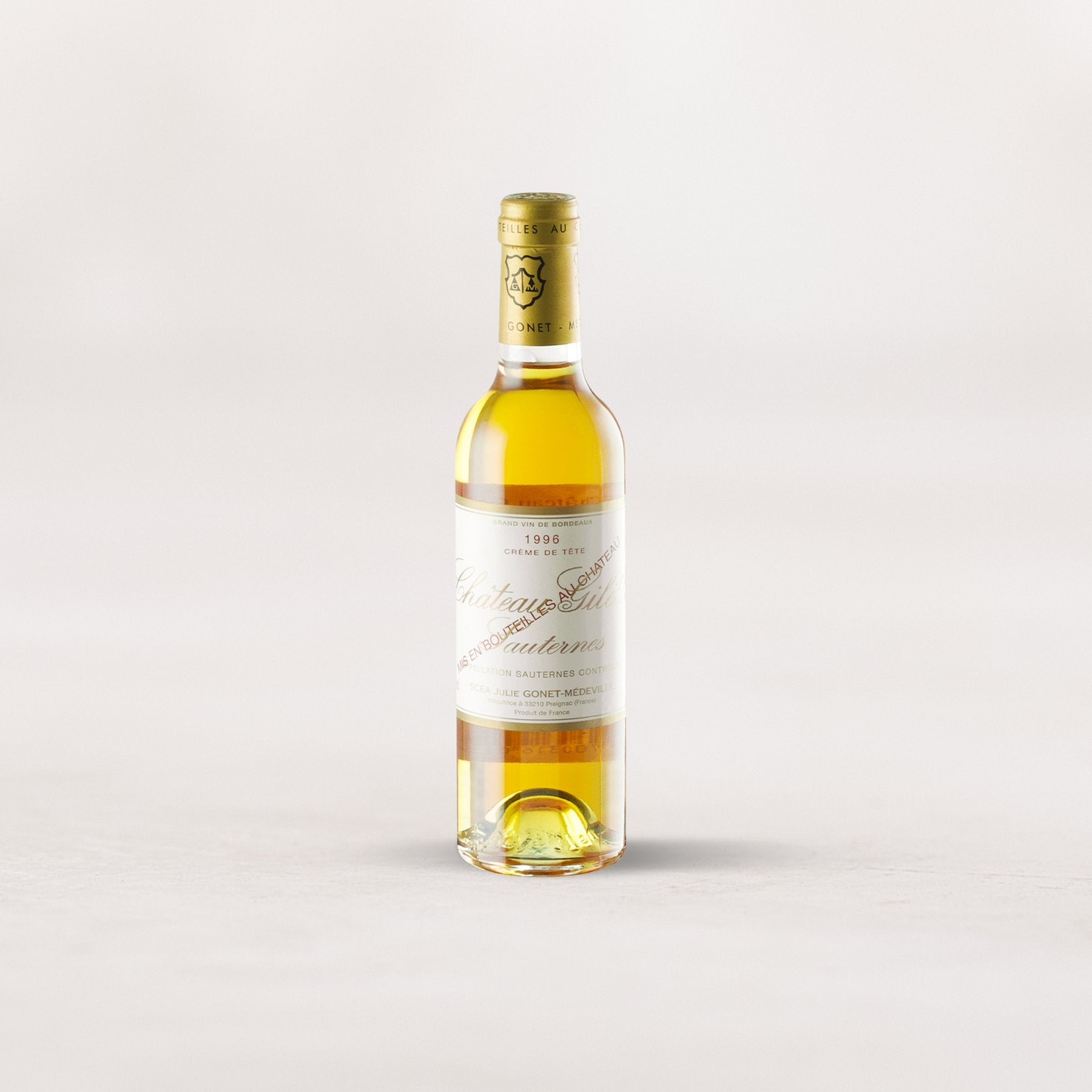Sweet wine lovers, aged bottle hunters, unicorn collectors: Buckle up, because right now we rocket into Sauternes’ stratosphere with two mature vintages of a one-of-a-kind rarity, Château Gilette’s 1996 and 1999 “Crème de Tête” in half bottles. Just what makes Crème de Tête a genuine singularity, even in a field as crowded as luxury Sauternes?
The fact that it’s made only in the best years, in quantities so minuscule it makes Yquem’s production look like Yellowtail’s, is enough. But what really sets it apart is the fact that every vintage sees nearly a quarter-century of aging before leaving the cellar. Every bottle of this sublime elixir comes raring to go, ready to coat your palate with golden fruit opulence, warming spices, and that deep complexity achievable only by time. Top-flight Sauternes like Gilette, in its prime drinking window, is one of the rarest experiences the entire world of wine offers and normally you’d need to exhibit monk-like patience to have it. But today we offer you the extraordinary chance to indulge in greatness as soon as your shipment arrives. As might be expected of such a special bottling, quantities are extremely limited.
As if all of the above wasn’t enough, Château Gilette is also run by one of the most driven and dynamic families in the French wine scene—power couple Julie and Xavier Medéville, whose stunning Gonet-Medéville Champagne and Eyrins Marguax have made regular appearances here on SommSelect. Xavier comes from a long line of growers in Mesnil, while Julie’s family history is deeply intertwined with Gilette. The estate has been in their control since 1710, and has developed a long and rich reputation for deeply classic, long-lived Sauternes. But everything changed during the dawn of World War II.
As they say, necessity is the mother of invention. By the 1930s, Julie’s grandfather René had already ditched his expensive and cumbersome wooden barrels for larger, more efficient cement tanks. And when World War II descended upon France, René left to serve and asked his wife to halt sales in his absence. When he returned, what he found was magical; the years of gentle breathing in the tanks had given the wines more detailed, complex aromatics while retaining their classically lush texture. The decision was then made that their Crème de Tête would see no fewer than 20 years in concrete before release, and the region’s most unique wine was born.
Both the 1996 and 1999 vintages we have today offer an experience many of us spend our entire drinking lives chasing—great Sauternes from highly-regarded vintages at their peak powers. Both vintages reflect the 90% Semillon, 8% Sauvignon Blanc, and 2% Muscadelle plantings in the vineyard, and they pour a luminescent gold with hints of amber. The 1996 leans toward the nuttier, more honey-laden dried fruit end of the Sauternes spectrum, while the 1999 sings with high-toned chamomile, peach pit, and saffron. The warmer 1999 vintage is perhaps the more luscious of the two, but it’s the briskness and refreshing zip of both bottles that most caught us off guard. These are absolute singing right now, but make no mistake; there’s plenty of gas in their tanks to carry them through for decades yet. I can’t stress enough just how special an experience a bottle of Gilette Crème de Tête is. It’s also an incredibly rare one, so act fast!











